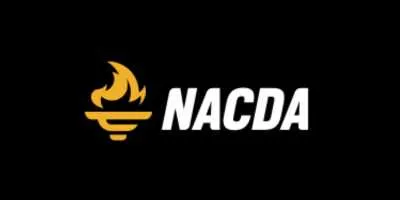Home » Outdoor Gyms » How to build an outdoor calisthenics gym for community recreation?

In recent years, outdoor calisthenics gyms have gained immense popularity as individuals and communities embrace the benefits of this dynamic and bodyweight-focused form of exercise. Calisthenics, with its emphasis on strength, flexibility, and functional movements, has captured the attention of fitness enthusiasts seeking an effective and engaging workout experience.
The construction of an outdoor calisthenics gym presents an exciting opportunity to create a thriving fitness destination that promotes health, community engagement, and an active lifestyle. This comprehensive guide aims to provide project planners with essential insights into the key considerations of designing, constructing, and maintaining an outdoor calisthenics gym.
From understanding the unique requirements of calisthenics equipment and safety measures to incorporating appropriate flooring, signage, and landscaping, we embark on a journey to unveil the art of crafting an exceptional outdoor calisthenics space. Join us as we explore the elements that contribute to a successful outdoor calisthenics gym, empowering you to create an inspiring and transformative environment that fosters a healthier and more vibrant community.
If you are planning to install a calisthenics gym, try our cost calculator to get a customized cost estimate tailored to your project.
What Is Calisthenics?
Calisthenics is a form of exercise that uses bodyweight movements to build strength, endurance, flexibility, and overall fitness. It involves exercises like push-ups, pull-ups, squats, and various gymnastics-inspired movements. Calisthenics focuses on progressive overload and can be adapted to different fitness levels. It promotes functional strength, coordination, and body control, offering a versatile and accessible approach to fitness.
Calisthenics vs. Outdoor Gym workout
Calisthenics require minimal equipment and can be performed anywhere. Outdoor gym workouts, on the other hand, offer a wider range of equipment options, targeting specific muscle groups and providing more variety. Calisthenics workouts prioritize progressive overload, while outdoor gym workouts offer versatility and specialization. The choice depends on personal preference and fitness goals.

Considerations for Building an Outdoor Calisthenics Gym for Your Community
Building an outdoor gym or calisthenics gym for a sports facility or community involves several key steps. Here is an overview of the process:
Planning and Design
Start by determining the objectives and purpose of the outdoor gym. Identify the available space and consider the target user group and their fitness needs. Determine if the focus will be on calisthenics or if a variety of fitness equipment will be included. Work with a design professional to create a layout that maximizes space, functionality, and user experience.
Key elements such as feasibility study, business plan, market opportunity, and impact analysis play crucial roles during this planning phase. Let’s explore their importance briefly:
- Feasibility Study: A feasibility study assesses the project’s viability, considering factors like location analysis, site suitability, market demand, available resources, and financial feasibility. It helps identify potential challenges and opportunities, enabling informed decision-making and risk mitigation.
- Business Plan: A well-structured business plan outlines the gym’s objectives, target audience, services, revenue streams, marketing strategies, and operations. It acts as a roadmap, guiding the project from inception to sustainability. A robust business plan attracts funding, partners, and necessary approvals.
- Market Opportunity Assessment: Evaluating the market opportunity involves studying local demographics, fitness trends, and competition. It helps understand the target audience, identify gaps, and tailor the gym to meet community needs. This analysis informs differentiation strategies and positioning to attract and retain users.
- Impact Analysis: Assessing the gym’s impact considers social, economic, and environmental factors. It examines the effects on community health, job creation, economic growth, and sustainability practices. By understanding these impacts, planners can maximize benefits and minimize any negative effects.
Budgeting and Funding
Establish a budget for the project and explore potential funding sources. This may include grants, community fundraising, sponsorships, or contributions from the sports facility or community organization. Research available grants and prepare grant applications if applicable.
The cost of installing an outdoor calisthenics gym can vary greatly depending on various factors such as the size of the gym, materials used, location, and desired features. On average you can expect to be paying somewhere between $12,000 and $100,000.
Basic equipment like pull-up bars, dip bars, and parallel bars typically range from a few hundred to a few thousand dollars. More elaborate and customized structures or multi-functional rigs can cost anywhere from several thousand to tens of thousands of dollars. The installation process, including site preparation, concrete work, and equipment setup, also contributes to the overall cost. Additionally, customization, design work, permits, and compliance with local regulations may incur additional expenses. Ongoing maintenance, repairs, and potential replacements should also be considered for long-term costs.
To obtain a more accurate estimate, it is advisable to consult with gym equipment suppliers, construction contractors, or fitness facility consultants. They can assess your specific requirements, location, and design preferences to provide a customized quote.
You can also try our outdoor gym cost calculator to get a customized cost estimate for your project.
Permits and Approvals
Obtain the necessary permits and approvals from local authorities, following any applicable building codes or regulations. This may involve submitting plans, conducting site inspections, and addressing any concerns raised by the authorities.

Calisthenics Gym Equipment Selection
Research outdoor fitness equipment suppliers specializing in calisthenics or general fitness equipment. Select equipment that aligns with your goals, budget, and available space. Consider factors such as durability, safety features, and suitability for calisthenics exercises. Obtain quotes and finalize the equipment procurement process.
Here are common types of equipment used in calisthenics gyms:
- Pull-Up Bar: A sturdy horizontal bar used for exercises like pull-ups, chin-ups, and hanging leg raises.
- Parallel Bars: Adjustable bars that allow for various exercises, such as dips, L-sits, and handstand push-ups.
- Dip Bars: Stationary bars used specifically for dips, which target the chest, triceps, and shoulders.
- Push-Up Bars: Handles or elevated platforms that provide a greater range of motion and wrist comfort during push-up variations.
- Resistance Bands: Elastic bands that add resistance to bodyweight exercises, aiding in progression and increasing difficulty.
- Plyometric Box: A sturdy platform used for box jumps, step-ups, and various explosive movements.
Site Preparation
Site preparation for an outdoor calisthenics gym involves assessing the subsoil conditions and implementing proper drainage. The stability and load-bearing capacity of the subsoil are evaluated to determine if additional reinforcement, such as compacted gravel or a concrete foundation, is needed to support the gym equipment and users. Adequate drainage measures, such as grading the ground and installing drainage systems, are implemented to prevent water accumulation, which can cause damage to the equipment and create safety hazards.
Installation and Surfacing
Install appropriate flooring or surfacing materials for the gym area. This may involve choosing a suitable surface for calisthenics exercises, such as rubber flooring, turf, or specialized calisthenics flooring, that provides impact absorption and traction.
Here are some recommended options:
Rubberized Paving: Rubberized surfaces are popular for outdoor calisthenics gyms due to their shock-absorbing properties and durability. They provide cushioning to reduce the impact on joints and minimize the risk of injuries.
Artificial Turf: Artificial turf is another suitable option for outdoor calisthenics gyms. It offers a natural grass-like appearance while providing a consistent and level surface. It is resistant to weather conditions and can endure high foot traffic.
Concrete with Protective Coatings: Concrete surfaces can be used as well, with the addition of protective coatings. Epoxy or polyurethane coatings can be applied to the concrete to enhance durability, provide slip resistance, and protect against moisture penetration.

Safety Measures and Signage
Safety measures and signage play a crucial role in maintaining a safe environment in an outdoor calisthenics gym. Safety measures should include proper equipment maintenance, regular inspections, and cleaning to ensure that the gym equipment is in good working condition and free from hazards. Additionally, clear and visible signage should be placed throughout the facility, providing instructions on proper equipment usage, safety guidelines, and any specific rules or restrictions. Signage can also help indicate emergency contact information and first aid locations, promoting user awareness and preparedness for any potential incidents.
Landscaping
Enhance the overall appeal of the outdoor gym by incorporating landscaping elements such as trees, shrubs and seating areas.
Amenities
Consider additional amenities like LED lighting, water fountains, storage space, restrooms, and changing rooms.
Maintenance and Operations
Develop a maintenance plan to ensure regular inspection, cleaning, and repair of equipment. Establish a schedule for routine maintenance tasks and address any issues promptly. Determine operational guidelines for the gym, including hours of operation, rules for equipment usage, and any necessary supervision or staffing.
Promotion and Community Engagement
Create awareness and promote the outdoor gym within the sports facility or community. Highlight the benefits of calisthenics or the diverse fitness opportunities offered. Organize events, workshops, or fitness programs to encourage active participation and maximize utilization of the outdoor gym.
Choosing the Right Calisthenics Gym Builder
When it comes to calisthenics gyms, selecting the appropriate contractors and suppliers is a crucial aspect of your outdoor gym project. It is advisable to choose partners who specialize in outdoor gym installations, possess a track record of delivering quality work, and offer comprehensive warranties and reliable after-sales service. These experienced professionals can provide valuable guidance throughout the process, drawing from their expertise and previous projects.
To find suitable contractors and suppliers for your outdoor gym, it is recommended to thoroughly review the websites of outdoor gym companies. Pay close attention to their portfolio, testimonials, and any case studies they may have. Additionally, seek advice from other sports facility operators in your area who have experience with outdoor gyms. Their insights and recommendations can help you identify reputable companies to consider.
To make an informed decision, obtain quotes from at least three different companies. This allows you to compare their offerings, pricing, and any additional services they provide. By evaluating multiple quotes, you can select a contractor or supplier that best meets your requirements in terms of quality, pricing, and overall value.
Get a customized quote for comparison by using our outdoor gym cost calculator. Just type in your project specs and receive a tailor estimate for your project.
Conclusion
In conclusion, building an outdoor calisthenics gym for community recreation requires careful planning, collaboration, and community involvement. By assessing available space, setting clear objectives, and considering equipment selection and safety measures, communities can create a well-designed facility that caters to diverse users.
Engaging experienced contractors and suppliers specialized in outdoor gym installations, seeking advice from local sports facility operators, and conducting thorough research ensures high-quality results. By fostering a sense of community ownership and involvement, the outdoor calisthenics gym becomes a space that promotes physical activity, social connections, and overall community well-being. This investment in the community’s health and vitality contributes to a happier and healthier community for years to come.
Looking to kickstart your project online? Use our user-friendly outdoor gym cost calculator for a precise cost estimate for your installation project.











